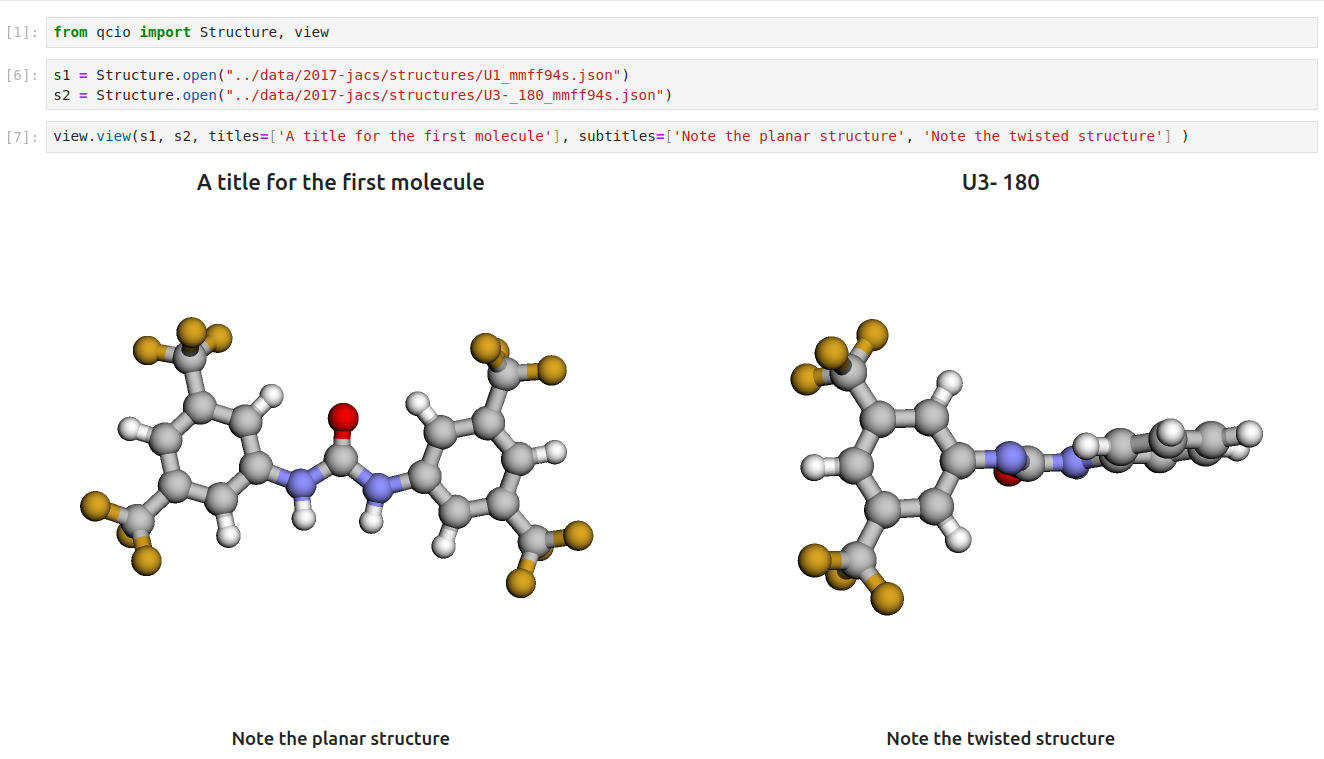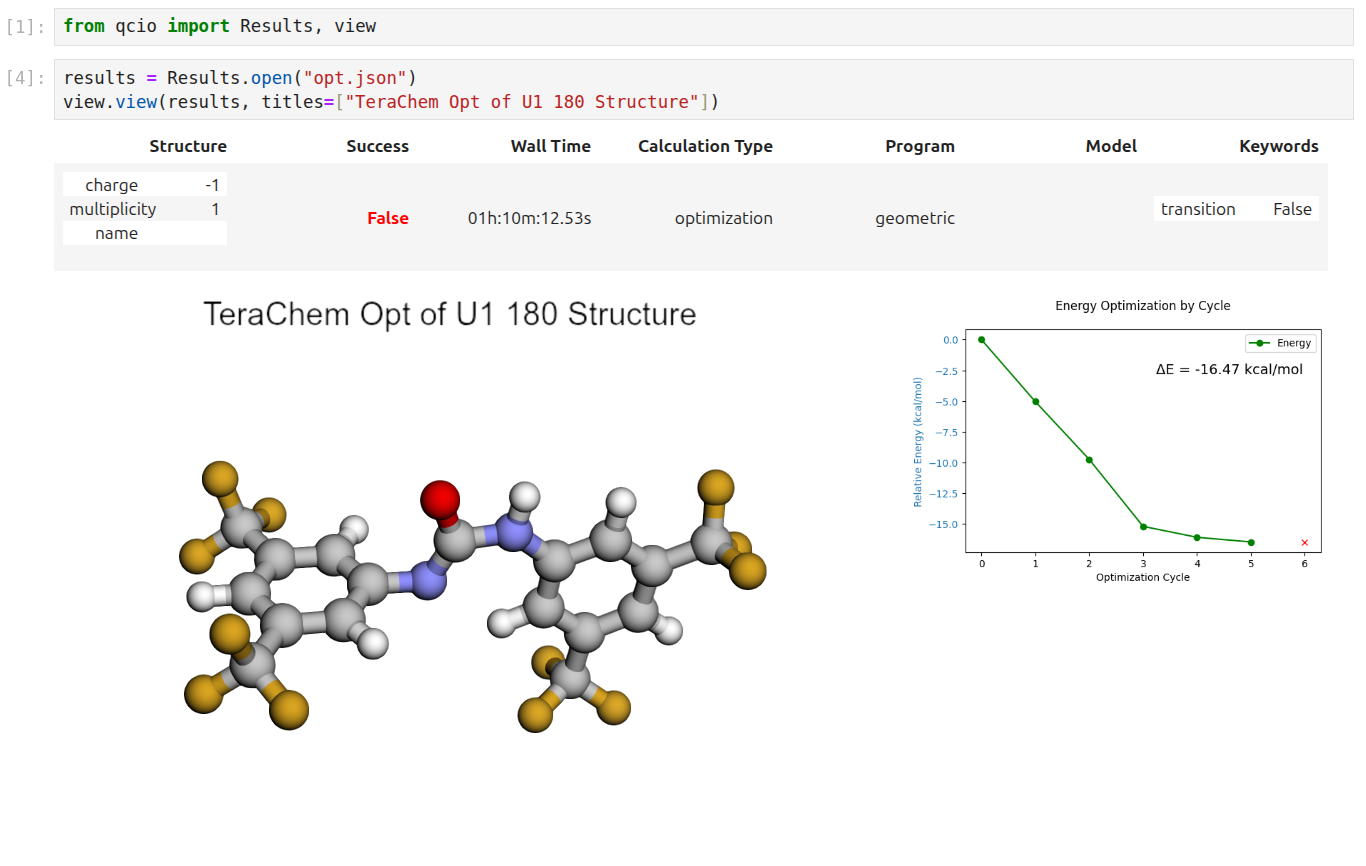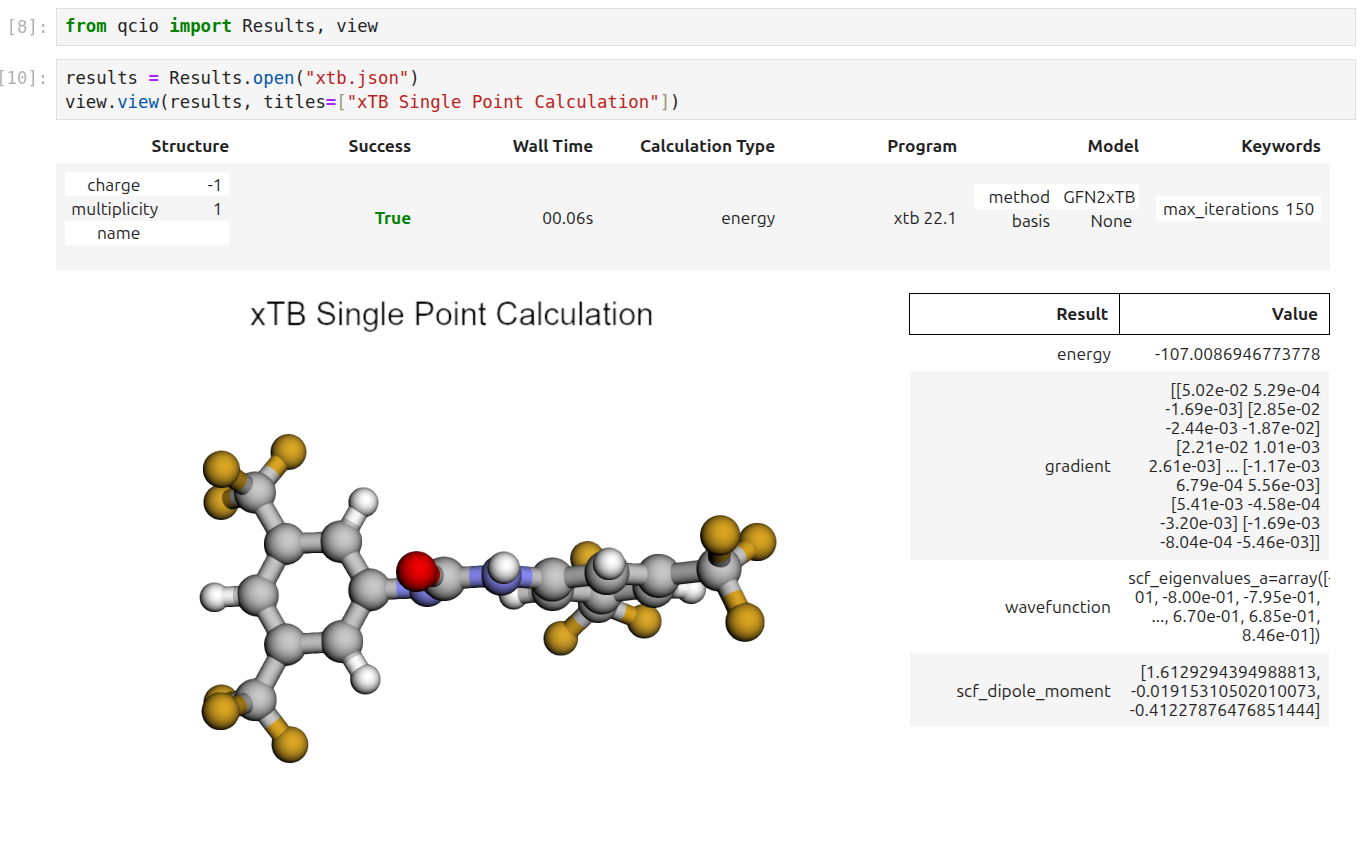Quantum Chemistry I/O¶
Elegant and intuitive data structures for quantum chemistry, featuring seamless Jupyter Notebook visualizations.
qcio works in harmony with a suite of other quantum chemistry tools for fast, structured, and interoperable quantum chemistry.
The QC Suite of Programs¶
- qcconst - NIST/CODATA2022 core physical constants, conversion factors, and a periodic table with clear source information for every value.
- qcio - Elegant and intuitive data structures for quantum chemistry, featuring seamless Jupyter Notebook visualizations. Documentation
- qccodec - A translation layer between quantum chemistry program inputs and outputs and structured
qcioobjects. - qcop - A package for operating quantum chemistry programs using
qciostandardized data structures. Compatible withTeraChem,psi4,QChem,NWChem,ORCA,Molpro,geomeTRICand many more. - BigChem - A distributed application for running quantum chemistry calculations at scale across clusters of computers or the cloud. Bring multi-node scaling to your favorite quantum chemistry program.
ChemCloud- A web application and associated Python client for exposing a BigChem cluster securely over the internet.
Installation¶
For a minimal installation:
python -m pip install qcio
To install all extra feature such as cheminformatics and visualization tools:
python -m pip install qcio[all]
You may need to put '' around the brackets in some terminals
python -m pip install 'qcio[all]'
✨ Visualization ✨¶
Visualize all your results with a single line of code!
First install the visualization module:
python -m pip install qcio[view]
or if your shell requires '' around arguments with brackets:
python -m pip install 'qcio[view]'
Then in a Jupyter notebook import the qcio view module and call view.view(...) passing it one or any number of qcio objects you want to visualizing including Structure objects or any Results object. You may also pass an array of titles and/or subtitles to add additional information to the molecular structure display. If no titles are passed qcio with look for Structure identifiers such as a name or SMILES to label the Structure.

Seamless visualizations for Results objects make results analysis easy!

Single point calculations display their results in a table.

If you want to use the HTML generated by the viewer to build your own dashboards use the functions inside of qcio.view.py that begin with the word generate_ to create HTML you can insert into any dashboard.
Check out the API Documentation to understand how qcio works. Take a look at the Visualizations to see how easy it is to understand your results using qcio!


